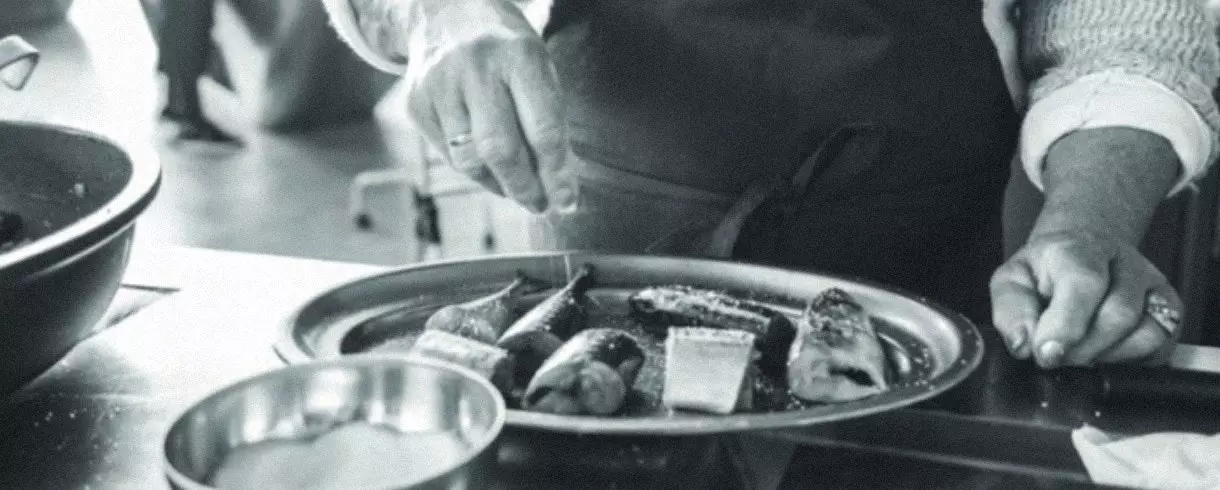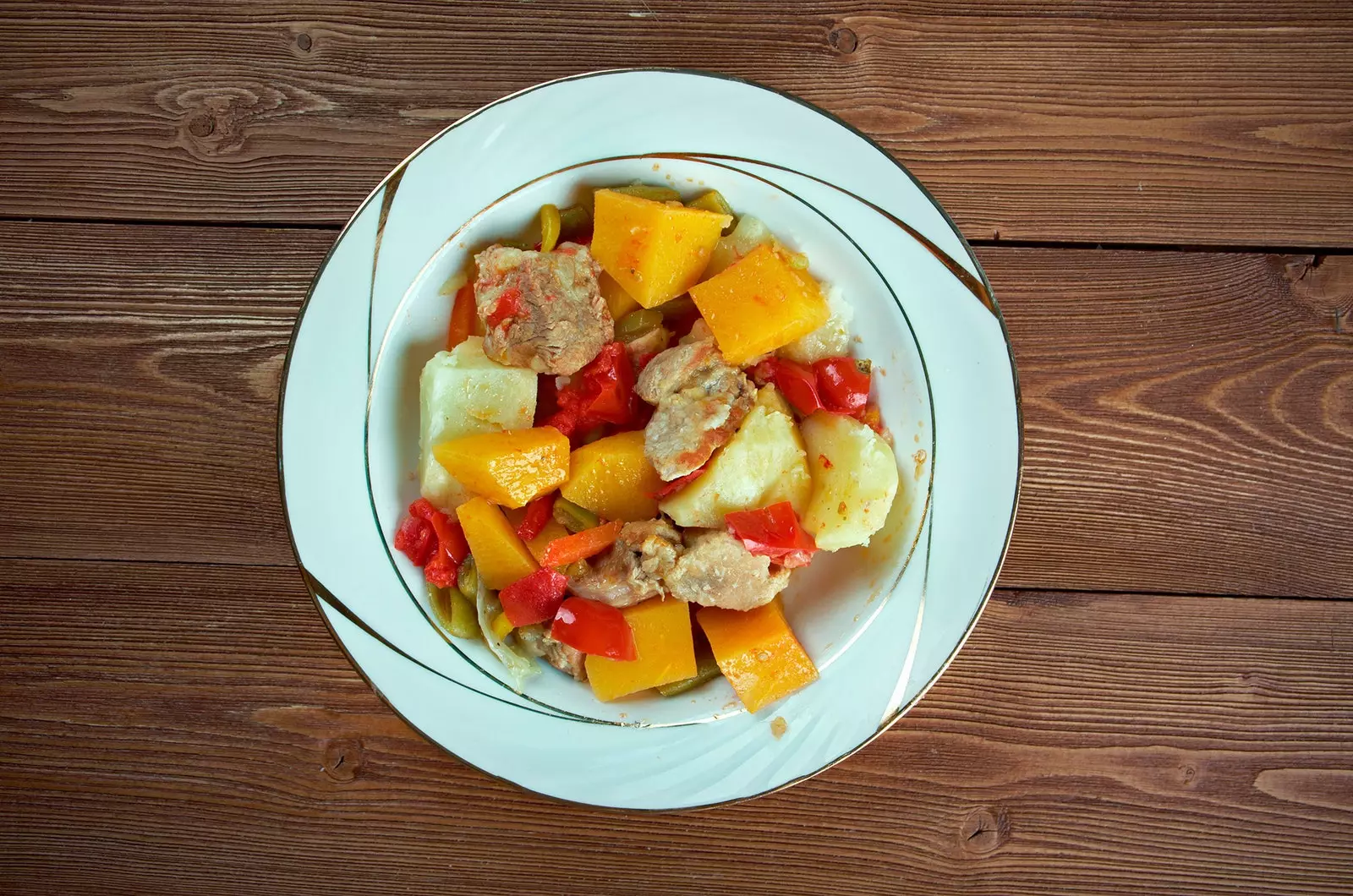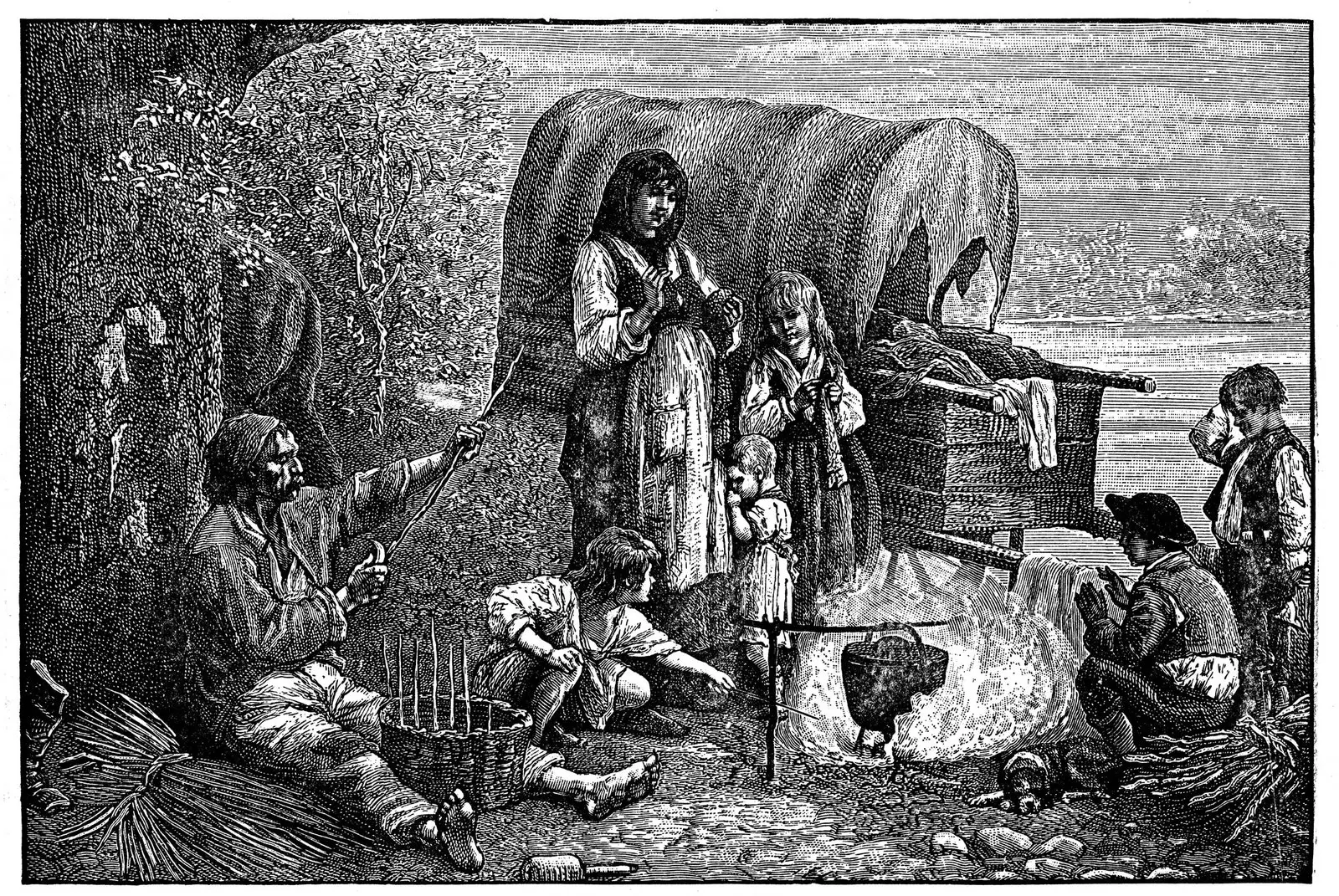
Pull, more than pull and eat
To answer these questions is to assume the none to one of the Europe's top traveling cuisines with more than six centuries of coexistence between us: the gypsy kitchen . That is why " pull , more needs to be said". It is a word caló which comes from the Romani term jallipen . Literally means eat and has assimilated so well on the streets that it has its own entrance in the Dictionary of the Royal Spanish Academy . Therefore, if you eat with a lot of appetite you are not eating, you are pulling . And it seems that talking is not MasterChef's strong point.
If we count all the editions of MasterChef, MasterChef Celebrity and MasterChef Junior broadcast in Spain, there have been 18 seasons in which the closest thing to some kind of recognition or tribute to Roma gastronomy has been a gypsy arm . That is to say, 18 lost seasons to unsuccessfully amend a historical error with a people represented in the Iberian Peninsula for more than six centuries. And it is that since 2013, the reality show has passed through the kitchens of half the world, from China to Japan via Mexico and Peru , to enjoy exotic recipes such as sushi, tacos or ceviche, forgetting (voluntarily) one of the world's most traveled cuisines.
Juan and Jose Salazar , known as The Chunguitos , they said before participating as contestants: “We are very happy, yes We are the first gypsies who entered MasterChef . Where we go there is joy, peace and love.” Joy, peace and love that they also asked Elena Furious in a later edition. Apparently, the only thing that gypsies claim in the media and that is strictly fulfilled in MasterChef.
It is important to highlight this particular case because it is about public television, an entity that in its estates prioritizes promoting any form of cultural representation well represented in the national territory with historical and/or journalistic value. Well, if we pay attention to this premise the 750,000 gypsies residing in our territory do not exist or they are systematically marginalized, lengthening the shadow of anti-Gypsyism in Spain.
That is why actions such as the campaign "Gypsy Lesson" of the Fundación Secretariado Gitano . Why names like Manuel Valencia Lazo, David Salazar, Samuel Muñoz, José Ramón Cortés and Ricard Marí not be unknown to the gastronomic community when it comes to excellent gypsy cooks without media power . Even with the famous cultural appropriation controversy , the media flagrantly ignored the roma cuisine . Rosalía's songs covered millions of pages and golden minutes, without taking into account that many traditional dishes that we all eat at home have been appropriated by the good gypsy hand in the kitchen.
Taking advantage of the fact that the Government intends to "promote the State Commission for the Historical Memory of the Romani people in Spain", the right time has come to answer some awkward questions before everything is on wet paper.
Would popularizing gypsy cuisine among Spanish society be a good tool for reconciliation? And going deeper into the matter, Why isn't there a gypsy chef with media power in Spain? why isn't there a full honours restaurant serving roma cuisine? Why do Japanese, Korean, Vietnamese or Ethiopian recipes appear in the media and we don't know a single recipe from the gypsy tradition? And the saddest thing of all, Why are there cooking students who hide their Roma origin thinking that gypsy gastronomy is absolutely of no interest to anyone?
“These are very complex questions to answer. We should explain the way in which the insertion of the gypsy community in Spain since the fifteenth century under the weight of persecution , forced assimilation and even attempted extermination," he says. Rafael Buhigas Jimenez , historian concerned with Roma communities and teaching researcher at the Department of Contemporary History at the Complutense University of Madrid . “We should stop at the way in which a stereotypical image of 'the gypsy' which has ended up supplanting the subject itself. In these two questions lies the reason why voice is not given or so that, in any case, "the gypsy" is used as a media, artistic and folkloric resource in the face of the reality of a diverse gypsy community far removed from the image that has been tried to be imposed”.
The structural damage suffered by the Roma community at a socio-historical level is so serious that this historian considers that, despite the relevance of gastronomy in our times, the house should not be started from the roof: "policies must take control in first-order democratizing sectors such as The education . In any case, the work of Roma people in multiple fields must be recognized and made visible in order to overcome the framework of subalternity that still exists. Even so, all this is not an obstacle to highlighting the gastronomic aspect within the teaching of gypsy history in the educational curriculum”.

meat stew
The truth is that disdaining gastronomy as one of the priorities would be another big mistake. And it is that if any feature can serve to explain to the world how are gypsies and gypsies is their own kitchen . Not in vain, one of the first questions when entering a gypsy home will be "What have you eaten?" . For Professor Buhigas, the concern for food is something intrinsic in any town that has faced segregation. “ Food is a concern that is related to how to get it and ensure daily subsistence . This need to survive often determines not only general aspects such as the type of job or residence, but also what is eaten and when . Thus, in the face of the stereotypical image that criminalizes the gypsy and reduces him to a greedy and thieving individual, a totally different reality in which the gypsy shares his food with everyone who enters his house, giving great value to family and fraternal ties that are generated around it, not only among gypsies but among all those invited regardless of their ethnicity”.
In the same tune is positioned Patricia Mayan , which on her Twitter account is defined as psychologist, intersectional feminist and kalí . “It is true that the roma cooks they have no representation in the Spanish media. But neither cooks nor teachers nor journalists nor any other professional area. Of course, it would be very good if public television complied with some representation fees of the diversities showing the Roma gastronomy”.
Despite the first outbreaks of optimism, this psychologist believes that we must be very careful with the future State Commission for the Historical Memory of the Romani people in Spain proposed by the new government. “One thing are the measures of reconciliation and historical reparation and another very different thing are measures of cultural and symbolic recognition. Gypsy cuisine would be an element of symbolic recognition , but a very, very tangential element. If we begin to recognize the gypsy gastronomy I would be fine with it, but not to the detriment of the school failure rates or the segregation of Roma populations into ghettos”.
The worst part of the case is that not only is the importance of gypsy cuisine omitted due to misinformation, but its very direct influence on regional cuisines . “In reality, many dishes of Roma gastronomy are fully integrated into the culture of the autonomous community to which they belong. Because traditional Roma cuisine is highly territorialized . There is an Andalusian, a Castilian, another Catalan, etc”. If a young Gypsy cooking student knows little or nothing about Roma cuisine or worse, he hides that he knows it, “ it is the inevitable consequence of a much more structural antigypsyism , which encourages people to seek paths to individual empowerment, even denying their own identity”.
In order not to reach this point of no return, there must be plans to deal with this problem in a more collective way so that the collective Roma identity is not completely stigmatized. "For example, generating research grants for Roma cuisine with government aid , include Roma cuisine in official cooking schools, promote quotas for representation and, of course, encourage recipe book publishing”.
That is precisely what the Gypsy community of Catalonia and the Alícia Foundation at the initiative of the Department of Labor , publishing the book Halar, gypsy cuisine in Catalonia . 34 recipes that seek to inventory the most authentic dishes of gypsy cuisine that is prepared in Catalonia. Some recipes that have been sustained thanks to the good work of the women of the family , who have orally transmitted all that well of wisdom from generation to generation with the obvious risk that it would not be reflected in writing in any recipe book.
**Apart from the scrupulous selection of recipes Thanks to personalized interviews with Roma women from all over the country, the book highlights the three points that make up the uniqueness of the Roma people: tradition as a nomadic people to enrich your food, the transmission of recipes from mothers to daughters (and very particularly from mothers-in-law to wives) and the new culinary contribution of young people through modern cuisine.
From the communion of all these features, a kitchen of modest origin has materialized, with few economic resources and use of the environment. Historically, the gypsy pot entered the landscape that was edible for a good stew . She cooks to deceive hunger and with satiating power, since one seldom knew the next time they might share a hot dish. When in doubt, they preferred recipes where the maxim “ better than about than not missing ” prevailed over any other culinary criteria. Hence the importance of wild herbs such as fennel, species such as saffron, the predilection for legumes , the omnipresence of farmyard animals such as chickens or pigs Y salted fish such as cod . Ingredients that fit in the suitcase to continue the trip almost without batting an eyelid.
Cooked with fennel and bread soup, porridge, chick peas with flour pancakes, tripe, pot of oil, cod stew or sardine soup to honor the spoon. Rice with snails, rabbit and fennel, rice with lentils, fish broth with crumbs, rigged potatoes or pella with white beans to give free rein to the spoon and fork. Roast, chicharrada, fried, fennel omelette or chicken with garlic and wine with a fork and knife. And finally, fritters, folate either good night to eat with your hands. All well expanded in a book that should exist with each autonomous community.
As Professor Rafael Buhigas recalls, citing the gypsy historian Ian Hancock in his speech to the Human Rights Congress Hearing about abuses against Gypsies in Eastern Europe , “any population that has been despised to the point of losing its identity as a human being, for many centuries, will not be able to be considered as an equal simply because they have passed a law”.
If the kitchen can function as a hinge between two realities, it is welcome. . Because, as one would say at a gypsy table before starting to pull: Health and freedom!

Health and freedom!
